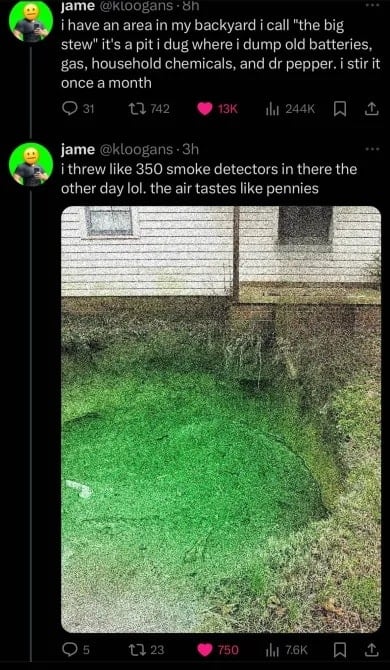this post was submitted on 21 Oct 2024
367 points (97.2% liked)
People Twitter
5103 readers
1246 users here now
People tweeting stuff. We allow tweets from anyone.
RULES:
- Mark NSFW content.
- No doxxing people.
- Must be a tweet or similar
- No bullying.
- Be excellent to each other.
founded 1 year ago
MODERATORS
you are viewing a single comment's thread
view the rest of the comments
view the rest of the comments

Would the grain show up in digital pictures as well or only on film? I know why it appears on film but the gnomes that work my cell phone camera won't give me a straight answer.
I’m not even sure it would show up on film either. But for CCD cameras (aka phone cameras and basically all modern cameras), 350 americium buttons buttons from a smoke detector in a wide “stew” that far away would produce nowhere near enough ionizing radiation to do that. On top of it, americium-241 is an alpha emitter, meaning that even if alpha particles reached the lens, the lens itself would block a good amount an alpha. This video gives a demo of a CCD without protection over it with americium and other various emitters :)
https://m.youtube.com/watch?v=jFNvYA7731o
Way to bust that with reality! Kept the fact checks coming!
Not exactly the same, but an electron beam puts a lot of noise in the image: https://youtu.be/Uf4Ux4SlyT4
Also I've heard the international space station gets a lot of dead pixels on their cameras from cosmic radiation.
I don't think it would look the same, if it was a CMOS sensor, I think you'd see lots of bright white pixels
IIRC radiation would cause grain on a cell phone camers.
https://openscience.isae-supaero.fr/digitalCollection/DigitalCollectionAttachmentDownloadHandler.ashx?parentDocumentId=6163&documentId=11848&skipWatermark=true&skipCopyright=true
Pretty much, but highly dependent on the energy of the ionizing radiation. Lower would come out as a dull grain, higher would show up as bright spots. Neither would look like this post though lol